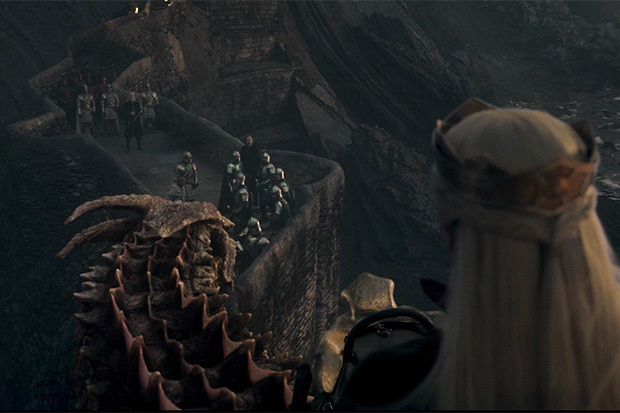Nota - Note
Desde que San Juan de Gaztelugatxe apareciese en Juego de Tronos, su popularidad solo ha seguido aumentando y, en temporada alta, se forman largas colas para poder acceder. Por esa razón, ahora es necesario disponer de ticket para acceder a San Juan de Gaztelugatxe. El acceso sigue siendo gratuito, pero tener ticket es obligatorio cuando se visita de 10 de la mañana a 7 de la tarde durante las siguientes fechas:
Semana Santa, Navidad y días festivos
Todos los días desde el 15 de junio hasta finales de septiembre
Fines de semana desde la última semana de marzo hasta finales de año
Los tickets pueden ser reservados con antelación aquí.
Si no te queda claro si es necesario tener ticket en la fecha de tu viaje, te recomendamos intentar hacer la reserva online. Si en el calendario que aparece, tu fecha está en gris, eso significa que no es necesario tener ticket.
De momento todavía es posible obtener los tickets en los Puntos de Atención al Público ubicados en San Juan de Gaztelugatxe. Sin embargo, esto puede cambiar en el futuro.
Cuando visites San Juan de Gaztelugatxe, te recomendamos tomártelo con calma y llevar contigo agua y un aperitivo. Siempre es posible parar en uno de los múltiples bancos que hay al lado del camino, aprovechando así a descansar y disfrutar de las vistas. Además, en la parte más alta de la isla, junto a la ermita, hay una pequeña zona protegida del viento con mesas y sillas donde se puede parar a descansar.

Since San Juan de Gaztelugatxe appeared in Game of Thrones, its popularity has only increased and during high season there can be long queues to access. For that reason, it is now necessary to book tickets to access San Juan de Gaztelugatxe. It is still free, but a ticket is mandatory when visiting between 10am and 7pm on the following dates:
Easter, Christmas and official Spanish holidays
Daily from June 15h until the end of September
Weekends from the last week of March until the end of the year
Tickets can be booked in advance here.
If you are unsure whether a ticket is necessary on the date of your trip, we recommend you to try to book it online and take note as to whether that specific date is grayed out on the calendar. If it is, then a ticket is not needed.
Note that for the time being, it is still possible to get the ticket on arrival at the Visitors’ Center in San Juan de Gaztelugatxe. However, this might change in the future.
When visiting San Juan de Gaztelugatxe, we recommend to take it easy and don't forget a snack and some water. You can always stop at one of the many benches located off the road and take in the views. In addition, at the top of the island, next to the church there is also a small area protected from the wind with tables and benches.
San Juan de Gaztelugatxe

Muchos reconocerán San Juan de Gaztelugatxe como la fortaleza Rocadragón de la séptima temporada de Juego de Tronos. Sin embargo, su nombre real se traduce como “castillo de roca” en euskera (“gaztelu” = castillo + “aitz” = roca).
Ubicado en la costa de Bizkaia, 35 km al este de Bilbao, San Juan de Gaztelugatxe es un lugar de visita obligada si vienes al País Vasco. La isla está conectada a tierra firme por un puente de piedra hecho por el hombre. El puente se convierte en un estrecho camino de 241 peldaños que zigzaguea de un lado a otro hasta alcanzar la cima. Una vez allí, verás la iglesia con una campana en su pared frontal. Según la leyenda, si tocas la campana tres veces y pides un deseo, se cumplirá.
La ermita en San Juan de Gaztelugatxe está dedicada a Juan Bautista. Aunque no está comprobado, se dice que él llegó a poner pie en esta isla. Sin embargo, el edificio que vemos hoy en día no es el original. A lo largo de los siglos, ha habido incendios y batallas, y la iglesia ha tenido que ser reconstruida en múltiples ocasiones. Se cree que la primera ermita fue erigida en el siglo IX. En el siglo XII, se convirtió en un convento. Sin embargo, dos siglos más tarde los frailes abandonaron el lugar llevándose todos los objetos de valor consigo.
Más adelante, San Juan de Gaztelugatxe tuvo también un objetivo defensivo, protegiendo el poder del señorío de Bizkaia. Fue utilizado como baluarte contra el rey de Castilla, Alfonso XI. Los siete caballeros de Bizkaia lucharon contra él en San Juan de Gaztelugatxe. Alfonso XI fue humillado y obligado a retirarse.
En 1596, San Juan de Gaztelugatxe fue atacado de nuevo, esta vez por Sir Francis Drake y sus corsarios. Saquearon todo lo que encontraron y mataron al ermitaño que cuidaba del lugar tirándolo desde la parte más alta de la isla.
San Juan de Gaztelugatxe también desempeñó un papel, aunque no fuera principal, durante la Inquisición española. Las brujas y sus reuniones nocturnas conocidas como “akelarres” en euskera, siempre han formado parte de la mitología vasca. Por esta razón, la iglesia católica dedicó mucho de su tiempo durante la Inquisición a la caza de brujas en esta zona. Rumores afirman que muchos de los acusados de brujería eran encerrados en las cuevas de San Juan de Gaztelugatxe.
La iglesia continuó deteriorándose con los años hasta ser finalmente demolida en 1886 y reconstruida completamente. Desgraciadamente, durante el proceso de demolición, todos los objetos y artefactos encontrados en el suelo, tal y como monedas y bolas de cañón, fueron lanzados al agua.
Más información se puede leer aquí. (pdf)

Many will recognize San Juan de Gaztelugatxe as the island fortress of “Dragonstone” from season 7 of Game of Thrones, however, its real name can be translated as “castle rock” from Basque (“gaztelu” = castle + “aitz” = rock).
Located just off the shore along the Bay of Biscay and 35 km (22 miles) east from Bilbao, San Juan de Gaztelugatxe is a definite “must” if you are visiting the Basque Country. The island is connected to the mainland by a man-made stone bridge. The bridge transitions into a narrow path that contains 241 steps and zigzags its way back and forth to the top. Once there, you will find the church which has a bell situated along the front of its facade. According to legend, after you have completed the climb, you should ring the bell three times and make a wish.
The church on top of the island is dedicated to John the Baptist. Although not proven, it has been said that he even set foot on the island. The small church is however, not original. Over the centuries the church has burned down and been rebuilt several times. It is believed that the first hermitage that existed here was erected in the 9th century. In the 12th century, it became a convent. However, two centuries later, the friars abandoned it taking with them everything of value.
Later on, San Juan de Gaztelugatxe had a strategic purpose as a defensive outpost for the lords of Biscay. It was used as a bastion against the King of Castile, Alfonso XI. The seven knights from Biscay fought against him at San Juan de Gaztelugatxe. Alfonso XI was humiliated and was forced to retreat.
In 1596, San Juan de Gaztelugatxe was attacked again, this time by Sir Francis Drake and his corsairs. They looted everything they found and killed the hermit that was living there by throwing him off a cliff to the rocks and water below.
San Juan de Gaztelugatxe also played a role, albeit small, during the Spanish Inquisition. Witches and their ritualistic meetings known as Akelarre in Basque, make up a part of the Basque mythology. For this reason, the Catholic Church focused much of its time during the inquisition hunting for witches in the region. Several accounts seem to indicate that many of the accused were locked up in the caves of San Juan de Gaztelugatxe.
The church deteriorated over time and it was eventually demolished in 1886 and then rebuilt from scratch. Unfortunately, during the demolition process, all of the artifacts found in the ground, such as coins and cannon balls, were thrown to the sea.
More information can be read here.(pdf) Spanish only.
|